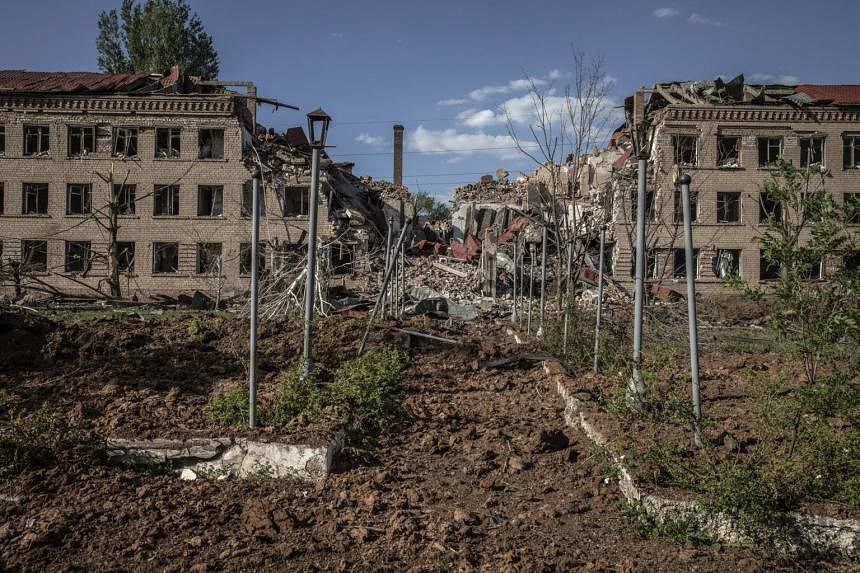KYIV (BLOOMBERG) - Ukrainian officials and architects are already thinking about how to rebuild cities torn by the Russian invasion in a way that is also respectful to the environment and helps fight climate change.
Mariupol city hall officials have started to assess the damage caused by Russian shelling as a first step to rebuild the city once the war is over, Deputy Mayor Sergei Orlov told an audience in Brussels at the New European Bauhaus festival, running through Saturday (June 11) in several European cities.
A coalition of Ukrainian and international experts in urban planning, heritage, energy and the circular economy are working toward the same goal.
"We will reconstruct Ukraine, we have to do that and we will do that," European Commission President Ursula von der Leyen said at the festival.
"It's not only in our interest, it's our moral obligation to do that. But when we are reconstructing Ukraine, let's do it the right way, let's do it in the spirit of the New European Bauhaus."
The New European Bauhaus is the EU's proposal for an aesthetic for the continent's green transformation.
Announced in 2020, it's part of the region's Green Deal, a 1 trillion-euro (S$1.46 trillion) push to eliminate greenhouse gas emissions by mid-century.
The plan requires an overhaul of the European economy, legislation and energy mix, as well as architecture and design.
Europe's top executive body wants that spirit to transcend the union's borders and play a role in the reconstruction of war-ravaged Ukraine.
"The EU Green Deal is a lot about the climate law, the legislative text, evidence from science, figures and impact assessments," Dr Von der Leyen said.
"But the heart and the soul of the European Green Deal is the New European Bauhaus."
Russia's brutal bombing of Ukrainian cities over more than 100 days has made Ukrainians much more critical of the country's Soviet heritage, said Mr Oleg Drozdov, co-founder of the Kharkiv School of Architecture and of Ro3kvit, the coalition of urban experts who are already thinking about how to rebuild.
From the architect's perspective, the problem with Ukrainian city design isn't just cultural, but technical - the concrete associated with Soviet-era buildings is one of the construction materials with the greatest environmental footprint.
In December 2021, Mariupol presented a strategy for 2030 that detailed a number of projects focusing on sustainable development and climate resilience.
Half a year later, 95 per cent of the city has been damaged by Russian bombs and 45 per cent of its buildings are completely destroyed, said Mr Orlov, the deputy mayor, joining the Brussels festival through a videocall from Ukraine.
Mr Orlov is helping coordinate the evacuation of civilians still remaining in Mariupol, and the relocation of the tens of thousands that have already fled.
"Even now we are thinking about how our economy will look, we are starting to think about new approaches to city planning" and building housing, he said.
"About how to implement this vision that is well-known in Europe - energy efficiency, using more climate neutral materials, and so on."
Rebuilding cities destroyed by wars is not new in Europe, said Sneska Quaedvlieg-Mihailovic, a Serbian and the secretary-general at Europa Nostra, a heritage organisation headquartered in The Hague.
But this is the first time that cities could be rebuilt taking into account energy efficiency and adaptation to climate change.
"I wish that when the reconstruction of Balkans was going on we had had the New European Bauhaus - a lot of ugly things were done and a lot of wrong things were done," she said.
"Understanding the values and principles of this New European Bauhaus can inspire. It means that the tragedy can at least be a renaissance."

